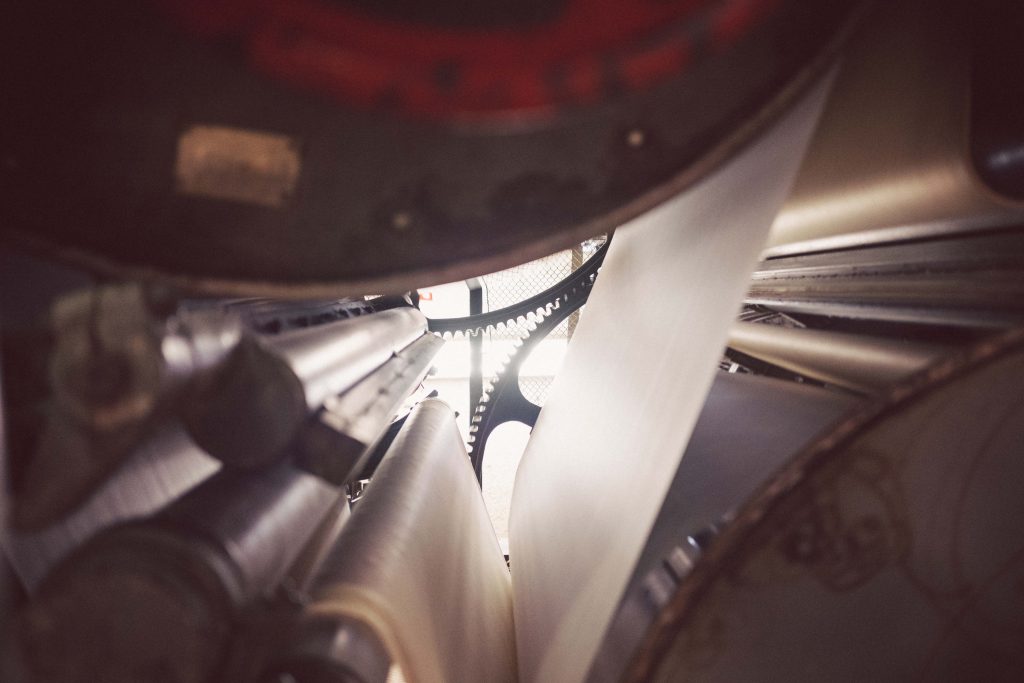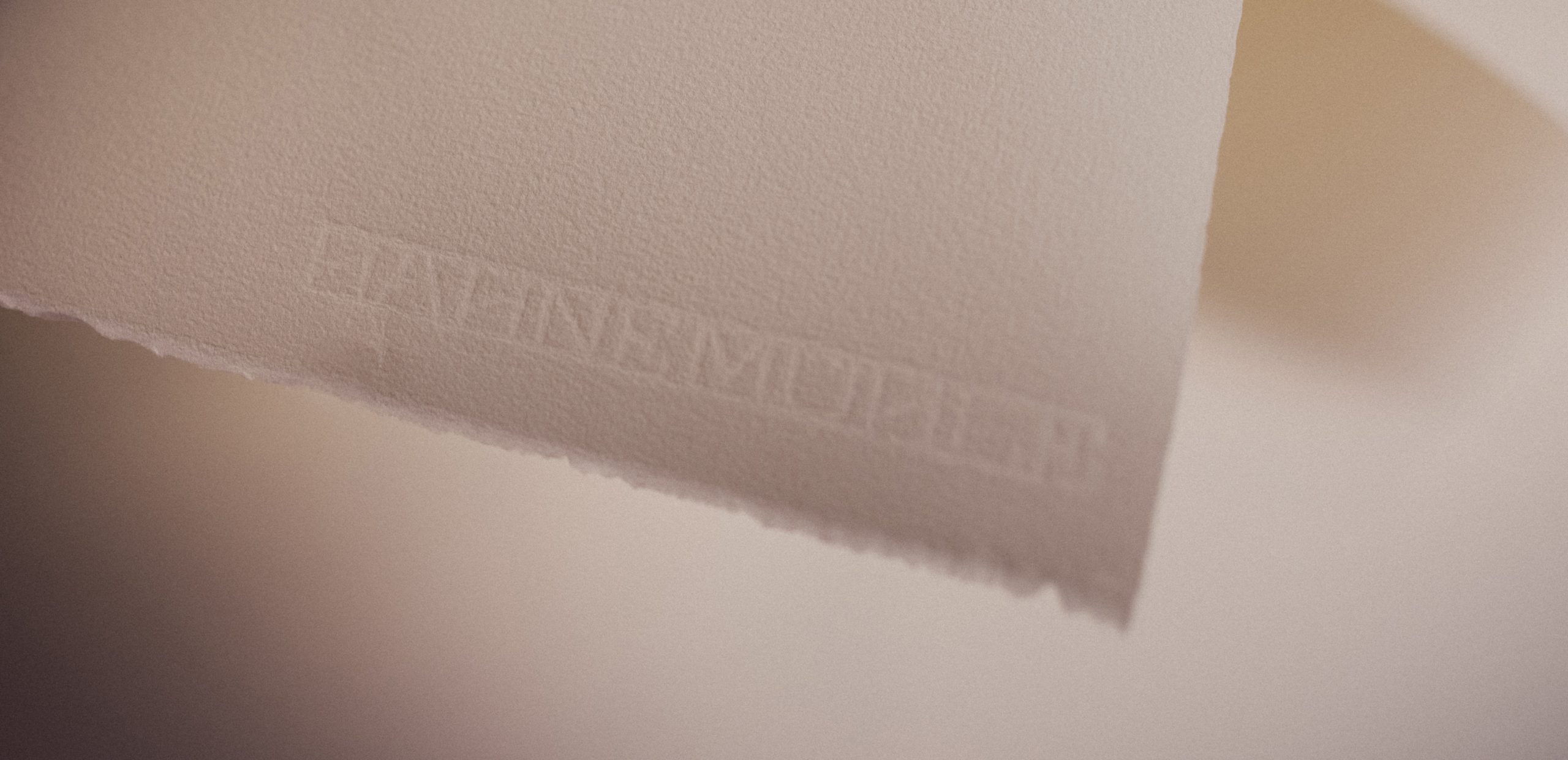You’re bound to know how it feels to stand, simply astonished, in front of the shelf containing all the beautiful artist papers in the specialist store, or to browse through the online dealers, wondering what paper you should get? What paper texture suits your subject? What’s the difference between genuine mould-made paper and Watercolour paper? What are the differences between the various surfaces? What grammage should my painting paper have?
Well, you don’t have to wonder any longer, because we provide answers to all these questions in several articles here on our blog. Why, you might ask? Because we’re artist paper experts and produce artist papers to meet the highest demands using proven recipes with first-class raw materials – and have been doing so for more than 400 years. That’s why our products carry the ‘Brand of the Century’ quality seal for German companies – and rightly so.
But why is paper so immensely important for your artwork’s success? Before we go into the details, we’d like to clarify this question. On some paper, even great colours don’t shine, water and paints form puddles, brushes suffer and your artistic idea is tough to implement. That’s what we’re told time and time again by artists who organise workshops or painting trips as instructors. While it is indeed true that high-quality materials have their price, they certainly save you from disappointment and let even beginners explore their talent. So you shouldn’t scrimp on paper!
We invite you to explore ‘The wonderful world of artist papers’ with us. In part one of the series of articles, we’ll explain the production processes and the terms ‘genuine Mould-Made Watercolour paper’ and ‘Watercolour papers’. The first article, ‘How are artist papers made?’, is here for you.
In further articles, we’ll provide answers to the questions ‘What are artist papers made of?’, ‘What surfaces are there?’ and ‘What properties are important?’. You can look forward to finding out and seeing lots of interesting things because we wrote this series of articles together with the watercolourist Alona Hryn, who diligently tested and painted on our paper.
Tip: Don’t scrimp on artist papers, brushes and paints! High-quality materials have their price, sure, but they also spare you disappointment, are long-lasting and add the valuable finishing touch to your work of art.
How are artist papers produced? Genuine mould-made paper vs. Akademie watercolour paper
Generally speaking, artist papers differ according to the raw materials and the production method. Both have an effect on the painting properties. Once the production process is complete, a distinction is made between genuine mould-made papers and Akademie watercolour papers. Here, you will learn everything about how the papers are produced on the cylinder mould paper machine or the fourdrinier paper machine.

How are genuine mould-made papers made?
This process is similar to traditional manual papermaking and produces the most valuable paper. Only papers produced on what is known as a ‘cylinder mould paper machine’ may be called ‘genuine mould-made papers’. Some papers have watermarks and the typical, irregular deckled edges as recognised quality characteristics.
Traditional paper production on the cylinder mould paper machine starts in the vat, in which a round mould rotates. At Hahnemühle, pure spring water and paper fibres as well as a few other ingredients are mixed in a highly diluted form inside the vat. The fibres are either rags (cotton fibres) or pulp. Read more about this in the article titled ‘Raw materials and properties of artist paper’.
In the vat, a round mould cylinder rotates slowly and evenly. The paper is produced at the highest point of the mould cylinder. This is where the paper fibres settle in a disorderly fashion and combine to form a wet paper fleece. The disorganised fibres subsequently cause the colours to ‘flow’ in a wonderfully free and inspiring way on the real mould-made papers. During the paper production process, the water firstly flows through the mould and felts then take over the paper fleece, which is still very wet. The felts transport the paper further into the paper machine, give it the surface desired according to the grade on both the top and the bottom, and drain the paper.
Watermarks can be applied to the cylinder mould or limitations for real mould-made paper produced in sheets. Both are sewn onto the mould cylinder with copper wire. In both cases, fewer fibres are deposited at this raised point on the mould. The paper is thinner there, light can shine through (at the watermark) or the paper can be torn at this point. A machine-made paper with four genuine deckled edges can also be produced in this way. How so? The paper is thinner at the dividing tear lines. Due to different feed speeds, the still-moist paper in the machine is torn at the thinner point. In addition to sheets, rolls can also be produced on the Hahnemühle cylinder mould paper machine. This genuine mould-made paper from the roll is subsequently cut and processed into painting pads in various artist sizes.
The cylinder mould paper machine’s speed is comparatively slow, at just 4 m/min to 15 m/min. However, this traditional production process, which has a handcrafted character, guarantees the high quality requirements that the genuine mould-made paper is expected to meet. The cylinder mould paper machine can be used to make papers with grammages of between 80 gsm and 600 gsm – very thin to very sturdy artist papers – from light Ingres paper to heavy Leonardo watercolour board or The Collection Watercolour 640.
Tip: Hahnemühle’s genuine mould-made paper is recognisable due to the orange-red cover of the pads or labels. The dark red covers or labels indicate that Watercolour paper is inside. The Collection has noble black lables.

How are Watercolour papers produced?
These papers are made on the fourdrinier paper machine. The fact that all the fibres are deposited in the machine’s running direction is characteristic of this production process. The flow behaviour of watercolour paints can be easily predicted and influenced on this paper.
The heart of the fourdrinier paper machine is a continuously rotating, flat plastic mould. The mixture of spring water and paper fibres flows evenly onto it. The water runs off through the mould, while the paper fibres are deposited in the machine’s running direction and bond to the paper on the mould. Felts also take over the further transport through the machine in the fourdrinier paper machine. The paper web runs over steam-heated cylinders between two felts. The paper web is dried and pressed. Hahnemühle felts mark the paper’s surface with their characteristic texture. So you can rest assured that you’re always getting your favourite paper with the same texture.
Important: At Hahnemühle, the papers are felt-marked during the production process. Always look out for this feature of real artist papers as it guarantees the handcrafted character! Watercolour papers, which in contrast are embossed once production is complete, often appear inferior.
All papers from the fourdrinier paper machine are gently dried and smoothed, continuously checked and then wound. The paper machine runs at a speed of up to 105 m/min. Hahnemühle’s fourdrinier paper machine produces not only Watercolour papers, but also filter papers and high-purity raw papers for use in Life Science applications, medicine and industry.
Tip: Pay attention to the paper surface – matt, rough or satin-finished – when making a purchase! The texture of the paper is more or less pronounced and important for your painting technique. Read more about this in the second article titled ‘The fabulous world of artist papers – raw materials and properties’ and part 3 “Surfaces of artist papers!








